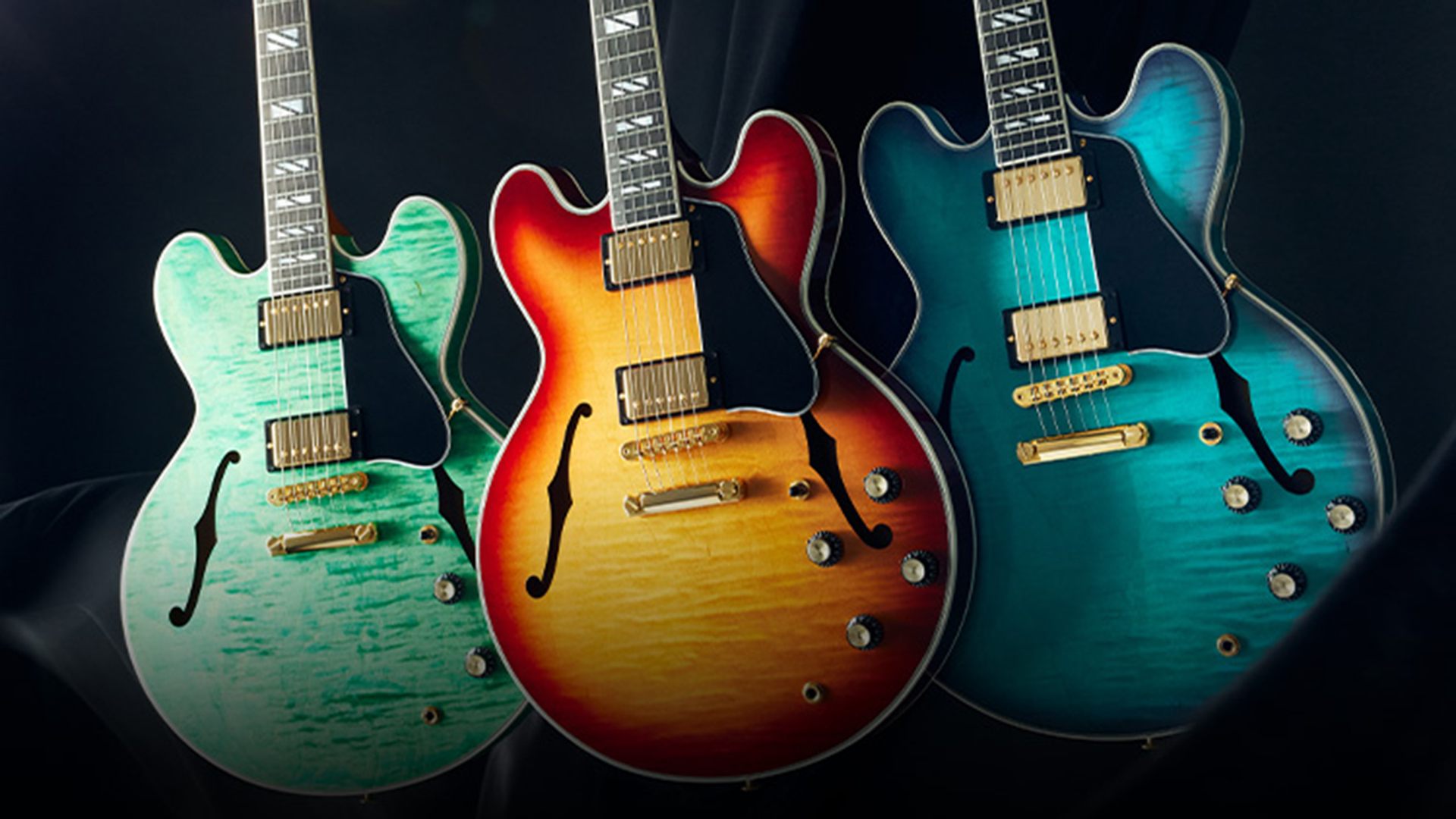Guitar World Verdict
The ES Supreme is indeed a supreme upgrade of the classic ES-335 design, with exceptionally more versatile tonal options and striking upscale appearance.
Pros
- +
Dazzling, eye-catching figured maple top, back and sides with brilliant finishes.
- +
Dynamic, articulate Burstbucker Pro humbucking pickups with coil-tap function.
- +
Immaculate construction with handcrafted details.
Cons
- -
The neck profiles on our examples had noticeable variation, so you’ll want to try before you buy to choose the match that’s best for you.
You can trust Guitar World
Gibson ES Supreme: What is it?
Eddie Van Halen’s favorite guitar during the mid-’70s was a Gibson ES-335, but he stopped playing it on stage because his bandmates said that it made him look like Roy Orbison.
While good old Roy revived his cool status in the late ’80s about the same time that vintage guitars entered a new era of hip, the original ES-335 in sunburst, cherry red or blonde has sometimes had a bit of an admittedly stodgy, traditionalist image over the years.
Gibson’s new ES Supreme semi-hollow electric guitars give the timeless ES design a flashy makeover thanks to their AAA figured maple tops, brighter, bolder finish options, gold-plated hardware, Super Split Block mother-of-pearl fingerboard inlays and new six-segment modified “diamond” headstock inlay.
The beauty of the ES Supreme is more than skin deep however, thanks to its pair of Burstbucker Pro humbucking pickups with coil tapping, Grover locking Keystone tuners, thinly applied gloss nitrocellulose lacquer finish, 22 medium jumbo frets and aluminum Tuneomatic bridge and stop bar tailpiece.
Compared to the original ES-335, the ES Supreme is like a super-modified high-performance street rod compared to a stock factory car.

The ES Supreme is available with three standard finish options: Bourbon Burst, Seafoam Green and Blueberry Burst. The body’s top, back and sides are made from a three-ply laminate with AAA figured maple on the outer layer, poplar in the center and maple for the inner layer, and the transparent stained colors complement and show off the tiger-stripe/flame grain patterns of the figured maple nicely.
Other tonewood components include a maple center block, mahogany neck and ebony fingerboard. Five-ply binding surrounds the body and headstock, while single-ply binding surrounds the fretboard.
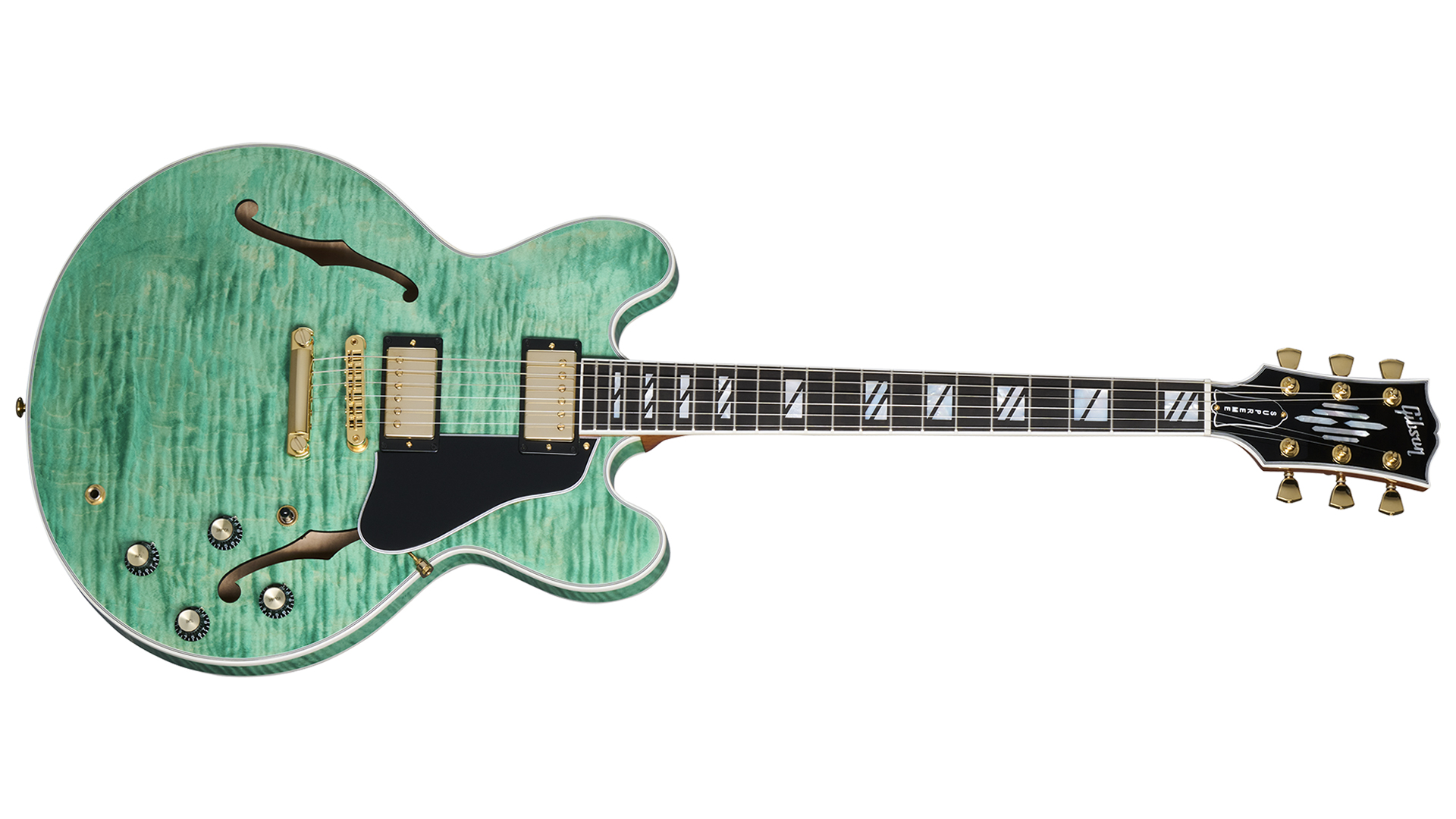
Gibson sent us three examples in each of the finish options to examine. While the specs note a rounded “C” shape profile, we noticed a bit of variation in the thickness and “chunkiness” of each neck from relatively flat and slim to noticeably round and beefy, a sign that the necks are handcrafted and not shaped solely by CNC machines, if at all.
Gibson ES Supreme: Specs
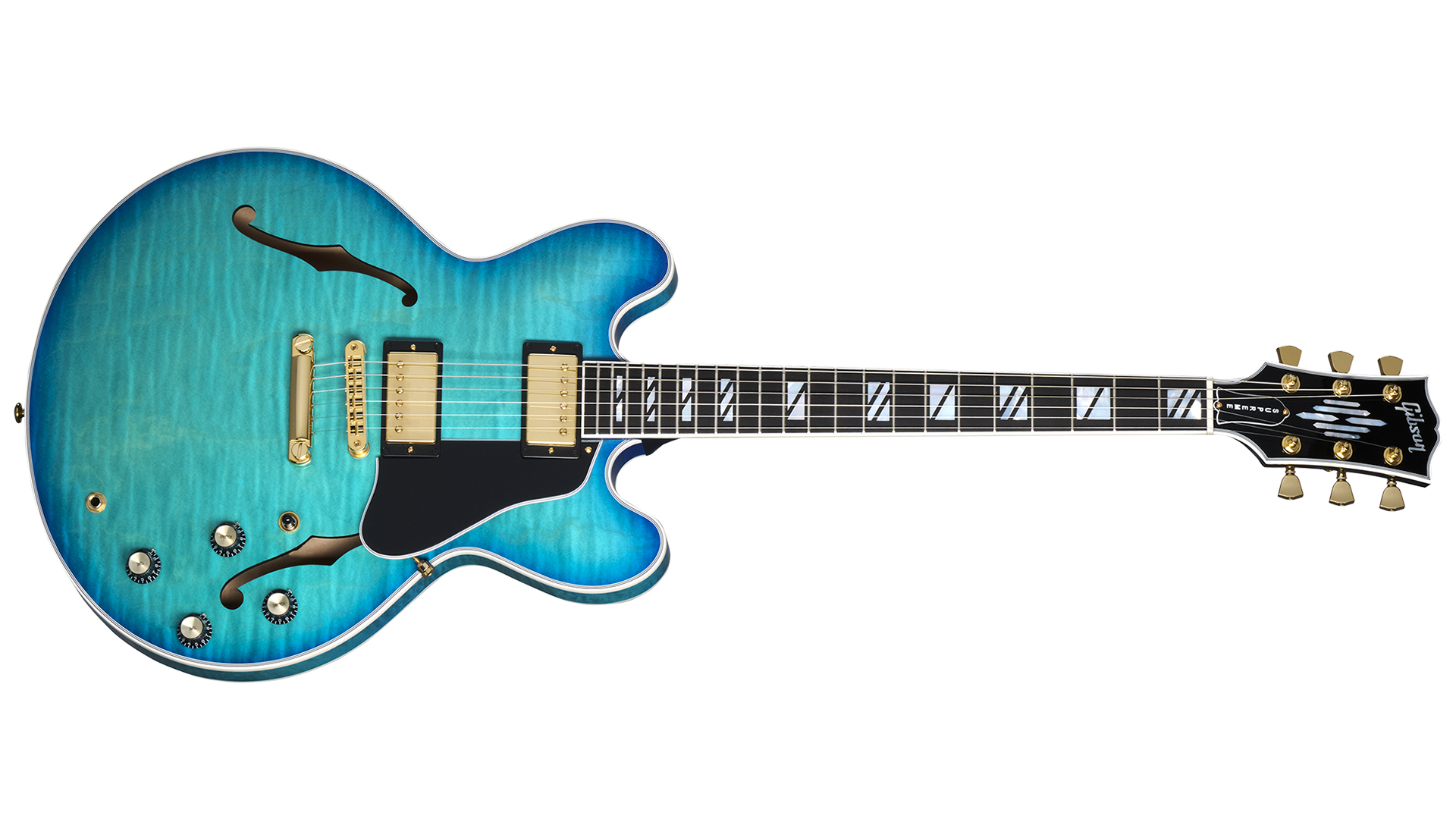
Launch price: $/£/€
Type: Semi-hollow electric guitar
Body: Three-ply AAA figured maple/poplar/maple semi-hollow with arched top and back
Neck: Mahogany glued set
Fingerboard: Ebony, compound radius
Neck Profile: Rounded “C”
Scale Length: 24.75-inch
Frets: 22, medium jumbo
Nut Width: 1.695" / 57.404 mm
Pickups: Gibson Burstbucker Lead and Rhythm Pro humbucking
Controls: Bridge Volume (pull coil-tap), Neck Volume (pull coil-tap), Bridge Tone, Neck Tone, three-way toggle pickup selector
Hardware: Aluminum Nashville Tuneomatic bridge with aluminum stop bar tailpiece, Grover Locking Keystone
Contact: Gibson
Gibson ES Supreme: Playability and sounds
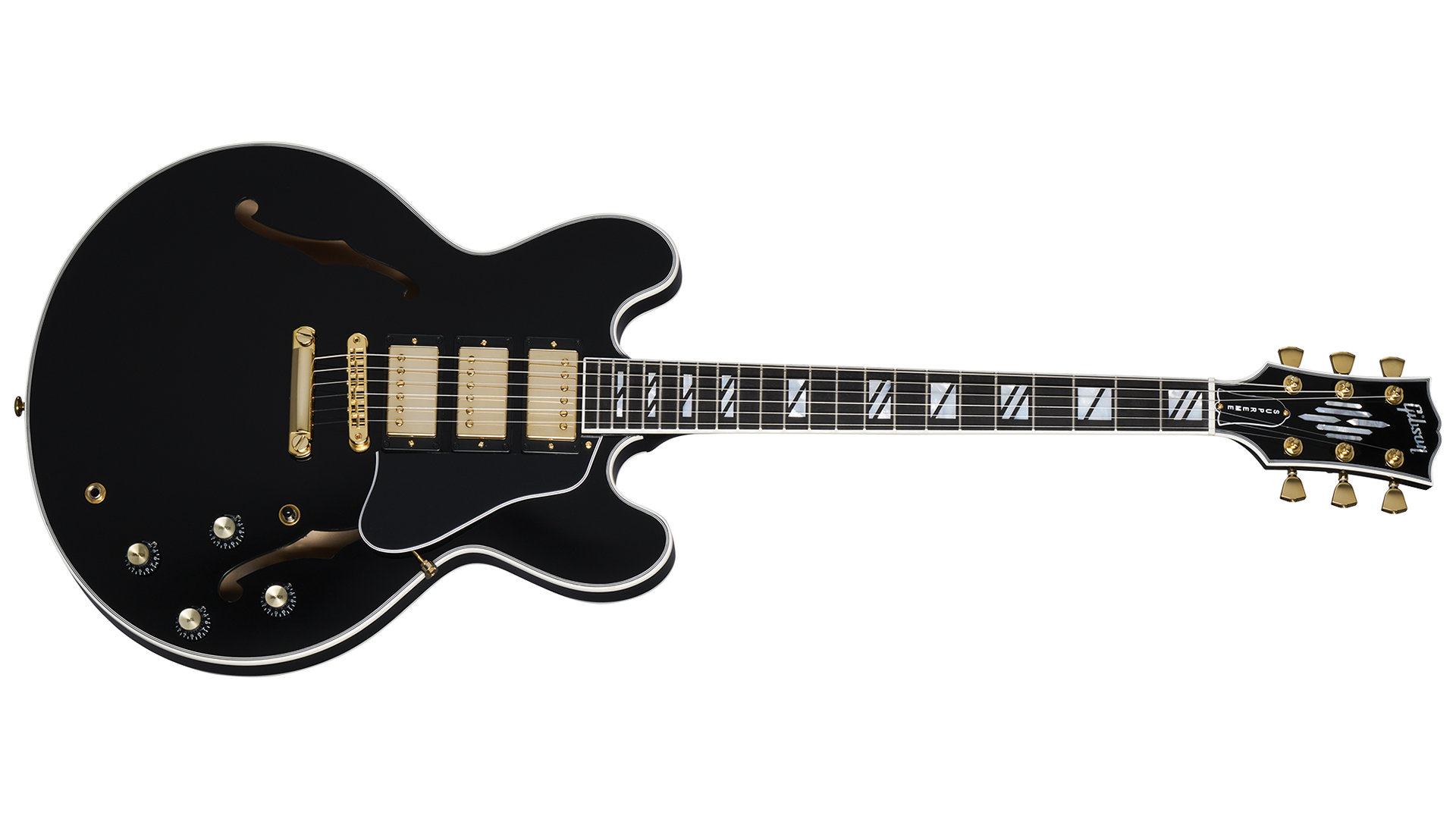
Because of the variation, we recommend buying an ES Supreme from a dealer where you can try out the guitar you want to take home with you instead of blindly rolling the dice with a mail-order purchase.
The Burstbucker Lead and Rhythm Pro pickups deliver classic Gibson PAF-style dynamics and articulation with well-defined midrange and chunky bite. The coil tapping function for each pickup is engaged by pulling up its corresponding volume knob.
The coil-tapped tones have a funky, hollow midrange quack similar to a Strat’s “in between” (i.e. bridge/middle, neck/middle) settings and are slightly fatter than typical straight-up single-coil tones. This provides a greater expanded range of textures and tones than the typical ES bridge/middle/neck settings.
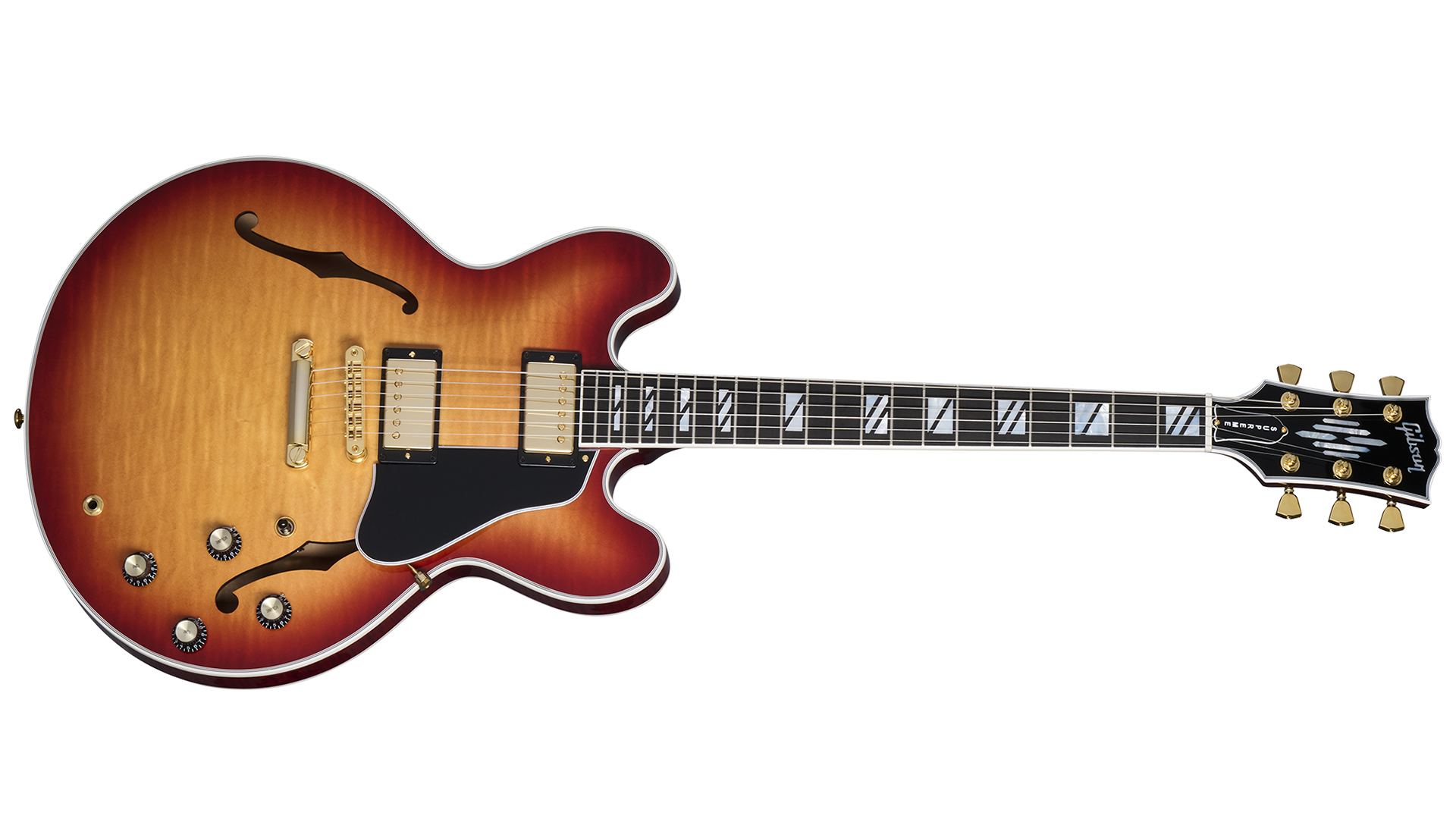
The bridge and neck humbucker each sound bold and powerful from clean to overdrive up through high-gain distortion and never get murky or muddy.
The hardware choices enhance the ES Supreme’s performance and dynamics. The Grover Keystone locking tuners ensure accurate, solid tuning, and the aluminum bridge and stop tailpiece maximize the transference of string vibration to the top and tone block to provide touch-sensitive response and full-bodied sustain.
Gibson ES Supreme: Verdict
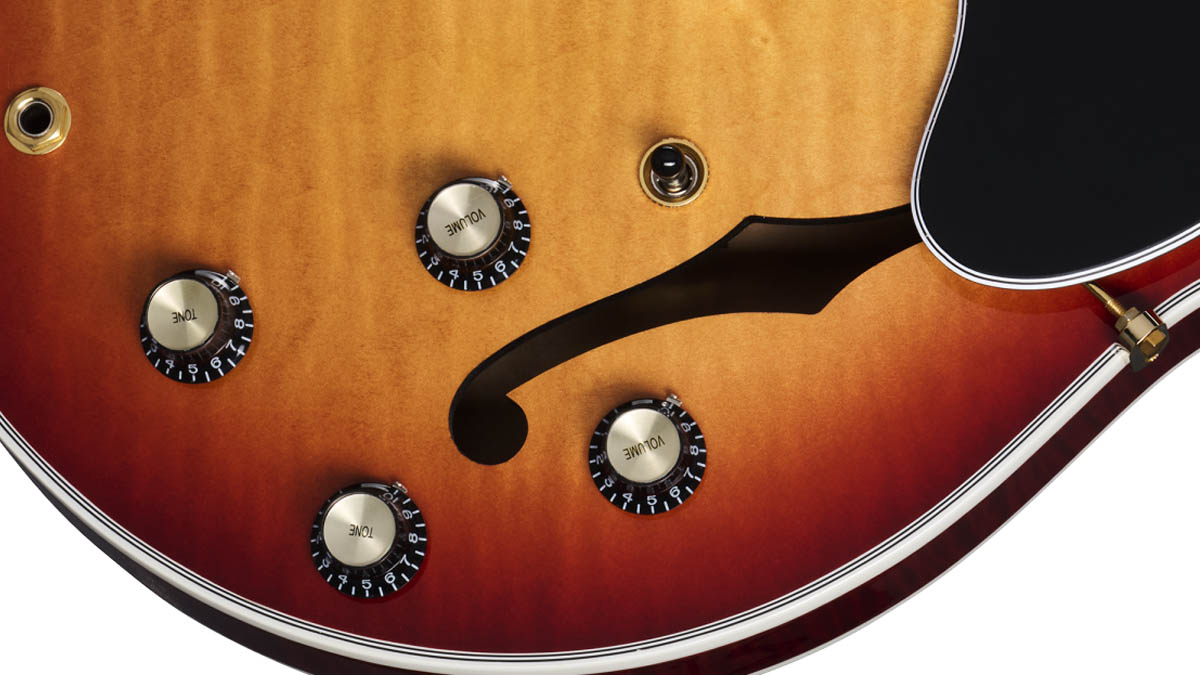
Construction details from the high-gloss finish to the fine feel of the fretwork is immaculate, as one would expect for a Gibson in the ES Supreme’s price range.
This is not your grandad’s ES guitar, but it’s still a semi-hollow electric for the ages that will provide decades of playing and performance enjoyment
These models may be on the more expensive side of the spectrum, but they’re worth it if you are discriminating about refined tone, expressive dynamics, luxurious craftsmanship and eye-catching looks.
This is not your grandad’s ES guitar, but it’s still a semi-hollow electric for the ages that will provide decades of playing and performance enjoyment.
The ES Supreme is indeed a supreme upgrade of the classic ES-335 design, with exceptionally more versatile tonal options and striking upscale appearance.
Gibson ES Supreme: Hands-on videos
Gibson
Guitar World
The Trogly's Guitar Show
Chris is the co-author of Eruption - Conversations with Eddie Van Halen. He is a 40-year music industry veteran who started at Boardwalk Entertainment (Joan Jett, Night Ranger) and Roland US before becoming a guitar journalist in 1991. He has interviewed more than 600 artists, written more than 1,400 product reviews and contributed to Jeff Beck’s Beck 01: Hot Rods and Rock & Roll and Eric Clapton’s Six String Stories.
“It was tour, tour, tour. I had this moment where I was like, ‘What do I even want out of music?’” Yvette Young’s fretboard wizardry was a wake-up call for modern guitar playing – but with her latest pivot, she’s making music to help emo kids go to sleep
Unlocking the power of 7th chords: expand your guitar chords beyond the basics
“One of the guys said, ‘Joni, there’s this weird bass player in Florida, you’d probably like him’”: How Joni Mitchell formed an unlikely partnership with Jaco Pastorius
